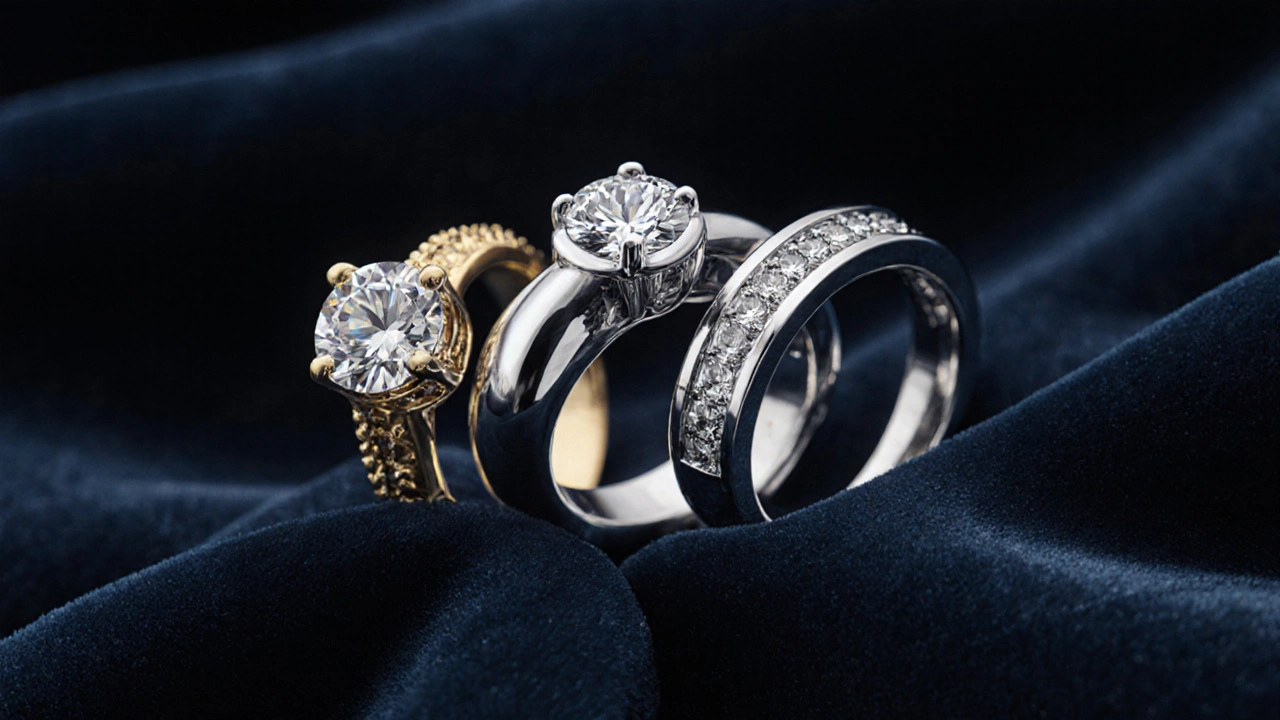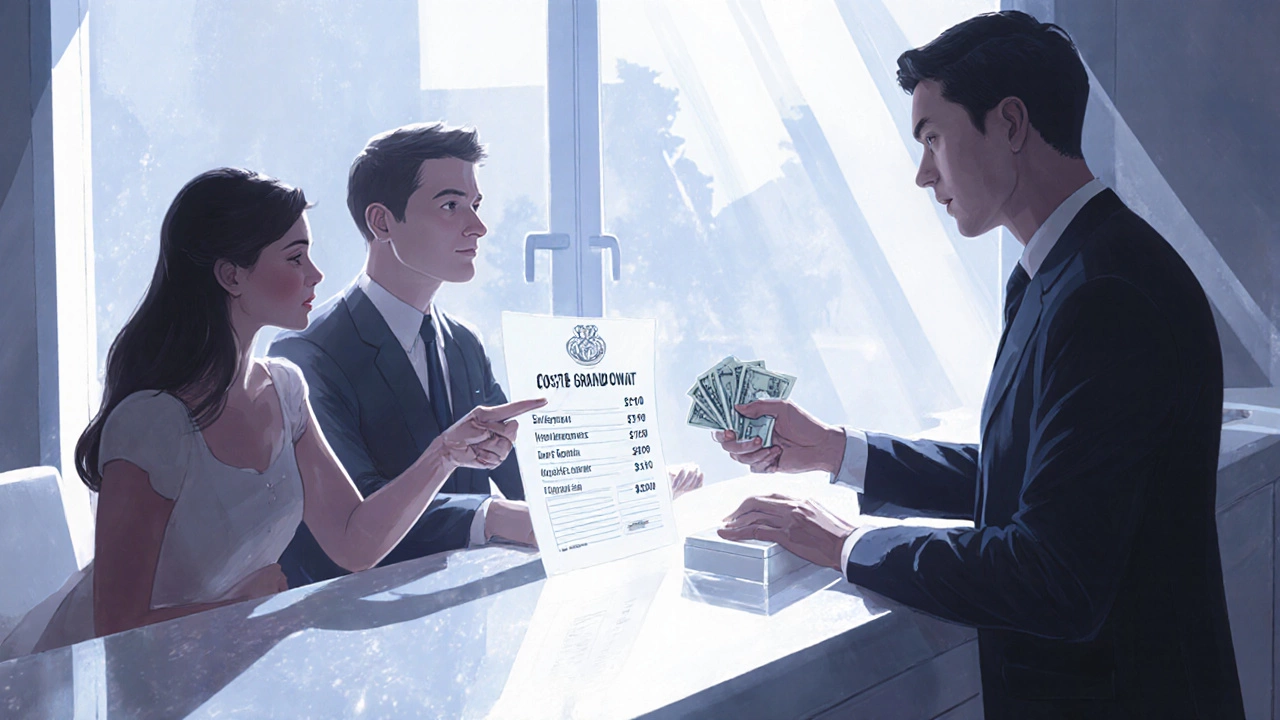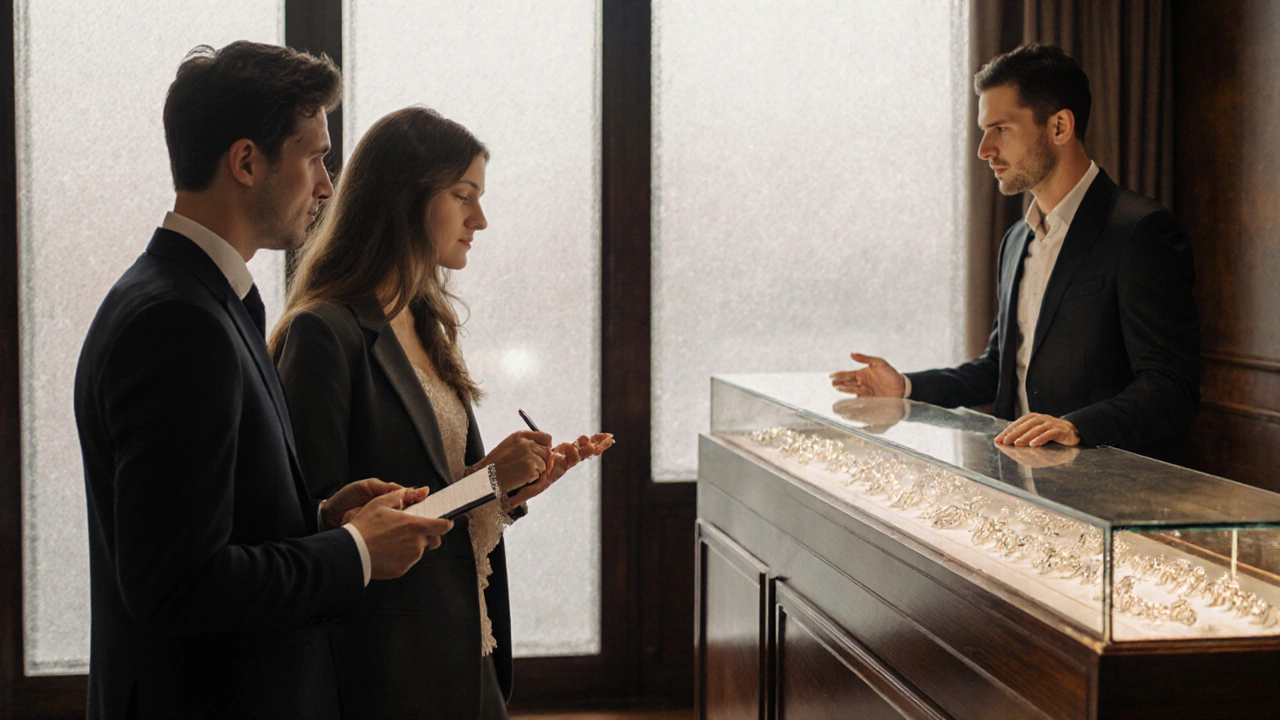Wedding Ring Budget Calculator
Build Your Perfect Ring Budget
Get personalized estimates for your wedding ring based on metal type, diamond choice, and setting style
Your Estimated Wedding Ring Budget
$0Cost Breakdown
Money-Saving Tips
Selecting 14K gold over platinum can save $200-$300
Your budget range: $0-$0 (based on metal and diamond choices)
Choosing a wedding ring is a milestone that blends emotion with numbers. One of the biggest questions couples face is whether to spill the beans about their budget when they first walk into a jeweler’s shop. The answer isn’t a simple yes or no; it depends on your style, timeline, and how comfortable you feel negotiating price.
Why the Budget Conversation Matters
Even before you pick a metal or a gemstone, understanding the financial ceiling helps you avoid wasted trips. A clear wedding ring budget narrows the field of possibilities, saves time, and reduces the risk of falling in love with a ring that’s out of reach. On the flip side, many shoppers worry that giving a number too early will limit the jeweler’s creativity or lock them into a lower‑quality piece.
Pros of Sharing Your Budget Up Front
- Tailored recommendations: When the jeweler knows your price range, they can showcase options that fit both your aesthetic and your wallet.
- Transparent pricing: Jewelers can break down the cost of metal, stone, setting, and labor, helping you see where dollars go.
- Negotiation leverage: A defined budget gives you a baseline for asking about discounts, alternative stones, or bulk‑order deals.
- Time efficiency: You’ll spend less time scrolling through catalogues that are clearly above your budget.
Cons of Keeping Your Budget Hidden
- Risk of overspending: Without a price ceiling, it’s easy to be swayed by sparkle and end up with a ring that strains your finances.
- Longer decision process: Jewelers may show you a wide range of pieces, leading to analysis paralysis.
- Potential miscommunication: You might assume a certain metal or stone is affordable, only to discover hidden costs later.
How to Talk Budget Without Selling Out
- Start with a price band, not a hard limit. Say, “We’re looking at $3,000‑$4,000,” rather than “Our max is $3,500.”
- Explain priorities. If a flawless diamond matters most, let the jeweler know; if metal choice is flexible, say so.
- Ask for a breakdown. Request a line‑item quote that separates diamond cost, metal, and setting.
- Bring research. Show screenshots of similar rings and their prices; this signals you’ve done homework.
- Be open to alternatives. Maybe a lab‑grown diamond or a different setting can keep the look while staying in budget.

Metal Choices that Stretch Your Budget
Metal choice drives a big part of the price. Here’s a quick guide:
| Metal | Typical Price per Gram (NZD) | Durability |
|---|---|---|
| Platinum | $60‑$80 | Very high, hypoallergenic |
| Gold (18K) | $45‑$55 | High, prone to scratching |
| Gold (14K) | $35‑$45 | Good balance of strength and shine |
| White Gold | $40‑$55 | Similar to yellow gold, often rhodium‑plated |
Choosing 14K gold over platinum can shave $200‑$300 off a simple six‑shank band, freeing up money for a larger stone.
Stone Options: Natural vs. Lab‑Grown
Diamonds dominate wedding ring aesthetics, but they’re also the biggest cost driver. A natural diamond of 0.5 carats in the GIA “Very Good” range can cost $2,000‑$2,500, while a lab‑grown equivalent sits around $800‑$1,200. Both sparkle brilliantly; the lab‑grown option offers a clear budget win without sacrificing look.
Setting Styles that Save Money
The setting determines how the stone sits and how much metal is used. Here are three common choices:
- Four‑prong: Classic, minimal metal, lower cost.
- Bezel: Metal wraps around the stone, adds protection but uses more metal.
- Channel: Ideal for multiple stones, requires extra metal work.
If your budget is tight, a four‑prong setting lets you keep a larger stone while using less metal.
Certification Matters
When buying a diamond, look for a reputable grading report, usually from the GIA (Gemological Institute of America). A GIA‑certified stone ensures you’re paying for the quality you expect. Ask the jeweler to show the report; it’s a bargaining chip if the price seems high.

Negotiation Tips You Can Use Today
- Ask for a price‑match guarantee if you’ve seen the same style cheaper elsewhere.
- Bundle services. Some shops offer free resizing or engraving when you purchase a set.
- Consider paying cash. Many jewelers give a 5‑10% discount for cash transactions.
- Request a “no‑markup” quote on the stone and pay for the metal separately.
- Don’t be afraid to walk away. Often, the vendor will call you back with a better offer.
Pre‑Visit Checklist
- Define your price band and top‑line limit.
- Choose a metal and setting style you’re comfortable with.
- Research stone quality (cut, color, clarity) and decide if a lab‑grown diamond is acceptable.
- Gather at least three pricing quotes from different jewelers.
- Prepare a list of questions about warranties, resizing, and after‑care.
Share or Not? A Simple Decision Table
| Aspect | Share Budget | Don’t Share |
|---|---|---|
| Customization | Higher - jeweler can suggest alternatives within range | Lower - may receive generic options |
| Price Transparency | Clear breakdown of costs | Potential hidden fees |
| Negotiation Power | Strong - you know the ceiling | Weak - you may overpay |
| Time Spent | Less - filtered selections | More - sorting through unsuitable pieces |
Most couples find that a modestly open conversation (price band, priorities) gives the best balance between creative freedom and financial control.
Final Thoughts
There’s no one‑size‑fits‑all answer, but the rule of thumb is: be honest enough to guide the jeweler, yet flexible enough to keep options open. A well‑defined wedding ring budget is your compass; sharing it turns the jeweler into a partner who helps you reach the destination without taking detours.
Should I give my exact budget number?
It’s safer to give a range (e.g., $3,000‑$4,000). That way the jeweler can suggest options on both ends while you keep some negotiating wiggle room.
What if the jeweler says my budget is too low for my dream stone?
Ask about alternatives: a slightly lower clarity, a lab‑grown stone, or a different setting that uses less metal. Often you can stay within budget without compromising the overall look.
Is it okay to negotiate on the metal price?
Yes. Metal markup varies, and many jewelers will offer a discount if you’re buying a set or paying cash. Always request a detailed cost breakdown first.
Do I need a GIA certificate for a lab‑grown diamond?
While lab‑grown diamonds are graded by other labs (IGI, EGL), a reputable certificate still guarantees the stone’s quality. Ask the jeweler which grading report they use.
How often should I get my ring resized?
Weight fluctuation can affect fit. Most jewelers recommend a check after the first six months, then annually. Many offer a free resize within the first year.

